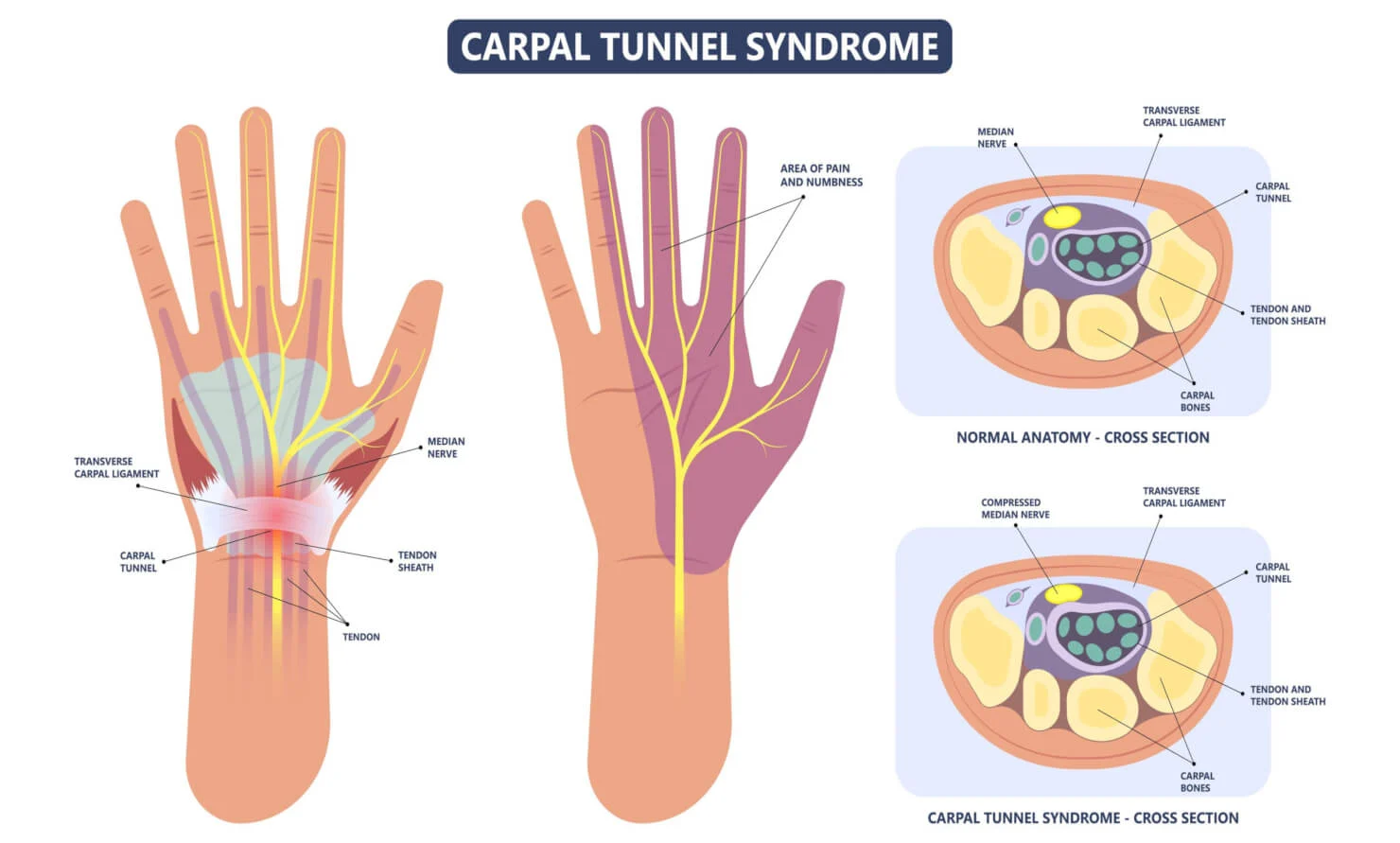Assume your hand has been in a terrible accident and you are unable to move your fingers. Do you have any idea why this is happening? It’s due to damage to your fingers’ flexor digitorum profundus (FDM) and flexor digitorum superficialis (FDS) muscles.
Table of Contents
Flexor Digitorum Profundus
The flexor digitorum profundus, commonly known as the extrinsic hand muscle (EHM), is a muscle on the outside of the forearm that is responsible for flexing the joints of the index, middle, ring, and pinky fingers. Its nucleus is located in the forearm’s deep volar compartment and arises from the ulna.
The flexor digitorum profundus is a muscle found in the midcarpal (wrist), metacarpophalangeal (knuckles), and interphalangeal (proximal end of fingers) joints of the index, middle, ring, and little fingers.
The flexor digitorum profundus tendons connect the base of the index, middle, and pinky fingers’ distal phalanges. Because the flexor digitorum profundus tendons pass through the carpal tunnel, the tendons of the index and middle fingers are separated. The tendons of the ring and little fingers are partially linked.
Function of Flexor Digitorum Profundus
Our bodies’ creation is often a source of fascination for us. All of the organs are dedicated to working in a systematic way. We’re astounded at how well our fingers can grasp anything!

Because the flexor digitorum profundus originates at or below the wrist joint, muscle contraction results in mass action movement in all four digits, resulting in a strong grasp.
Because the flexor digitorum profundus muscle inserts into the dorsal extensor of the proximal phalanges, it aids in full flexion of the fingers at interphalangeal joints and metacarpophalangeal joints.
Blood Supply and Lymphatic
The anterior interosseous artery (a branch of the common interosseous artery) and the palmar interosseous artery supply the flexor digitorum profundus (a branch of the median nerve). These interosseous arteries branch out to form the flexor digitorum profundus and flexor pollicis muscles.
The upper limb or forearm lymphatic system, which consists of superficial and deep lymphatic vessels, is linked to the flexor digitorum profundus.
The basilic vein’s superficial vessel leads to the cubital lymph nodes, while the cephalic vein leads to the axillary lymph nodes. The flexor digitorum profundus, which culminates in the humeral axillary lymph nodes, is also served by several deep lymphatic veins.
Read Also:- The Significance of Market Research in the Healthcare Industry
Nerves
The median nerve supplies the lateral part of the flexor digitorum profundus, which includes the index and middle fingers, whereas the ulnar nerve supplies the medial section, which includes the ring and little fingers.
Muscles
The flexor digitorum profundus muscle, along with the flexor pollicis longus and pronator quadratus, constitutes a deep layer of the ventral forearm muscles. At the Camper chiasm, the flexor digitorum profundus and flexor digitorum superficialis tendons decussate.
Clinical Significance
Jersey Finger
“Jersey Finger” is the most prevalent flexor digitorum profundus injury. The flexor digitorum profundus tendons rupturing at the point of attachment to the distal phalanx causes it. The “rugby finger” is another name for it.
This injury can happen if a player grabs the jersey of another player with the tip of their fingers while running or playing. The tip of the finger is hyperextended, and the proximal region of the finger is flexed as a consequence.
Depending on the severity of the damage, the “Jersey finger” might partially or totally rupture FDP tendons. The ring finger is often related to a jersey finger injury 75% of the time. The traumatic accident is not limited to football; any physical activity can result in a jersey finger injury.
Flexor Digitorum Superficialis
It is the largest muscle in the forearm’s anterior compartment. This muscle is located in the forearm’s superficial layer, as its name suggests. It runs distally towards the wrist when it divides into four tendons. They are easily visible on the distal area of the forearm due to their superficial nature.
Origin and Insertion
It is split into two sections.
The common flexor tendons connect the medial epicondyle of the humerus bone to the humeroulnar head.
The radial head is formed from the upper two-thirds of the radius’s anterior. It reaches all the way to the forearm’s distal end.
In the strata shape, the muscles are often placed superficially.
What’s the difference between the flexor digitorum profundus and the flexor digitorum superficialis?
As previously stated, the flexor digitorum superficialis is located in the front compartment of the forearm, just under the flexor digitorum profundus.
To put it another way, the superficial divides into two to allow the profundus to pass, and the superficial split tendon then reunites deep to the profundus tendon, around which it creates a loop.
Blood supply
The median nerve and ulna artery passes via a muscular arch formed by the two heads of superficial.
The superficial primary arterial blood supply is the ulna artery, while its posterior surface is supplied by the median artery.
Function
At the proximal interphalangeal and metacarpophalangeal joints, the superficial is responsible for the flexion of the digits 2-5. They have separate muscle slips for each of their four digits, resulting in discrete finger flexing at the interphalangeal joints. It also helps with wrist flexion.
Clinical Significance
Carpal Syndrome

The carpal syndrome affects the thumb, index, and middle fingers, as well as the median region of the ring finger, causing numbness, tingling, or prickling, as well as discomfort. The compression of the median nerve as it passes through the carpal tunnel is the main reason. Flexor digitorum profundus, flexor digitorum superficialis, and flexor pollicis longus are all connected to the median nerve.
The narrowing of the space around the median nerve is the most common cause of the carpal syndrome. It’s possible that it’s selling because of an injury, inflammation, or tumor.
The carpal syndrome is seldom caused by an abnormal muscle belly developing from the flexor digitorum superficialis compressing the median nerve.
